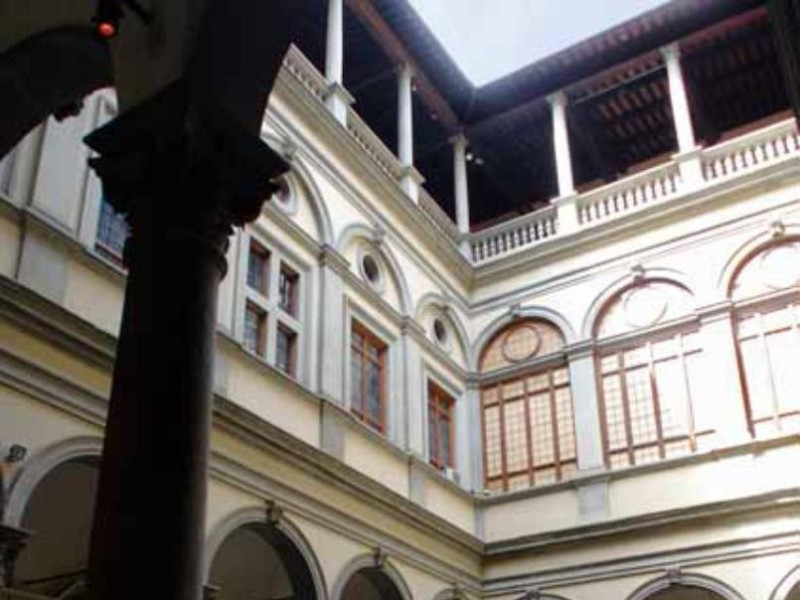Palazzo Strozzi
Palazzo Strozzi is an example of civil architecture with its rusticated stone, inspired by the Palazzo Medici, but with more harmonious proportions. Unlike the Medici Palace, which was sited on a corner lot, and thus has only two sides, this building, surrounded on all four sides by streets, is a free-standing structure. This introduced a problem new in Renaissance architecture, which, given the newly felt desire for internal symmetry of planning symmetry: how to integrate the cross-axis. The ground plan of Palazzo Strozzi is rigorously symmetrical on its two axes, with clearly differentiated scales of its principal rooms.
The palazzo has mullioned paired windows (bifore); the radating voussoirs of the arches increase in length as they rise to the keystone, a detail that was much copied for arched windows set in rustication in the Renaissance revival. Its dominating cornice is typical of the Florentine palaces of the time.
The palace was left incomplete by Simone del Pollaiolo (il Cronaca), who was in charge of the construction of the palace until 1504. Also byCronaca is the cortile or central courtyard surrounded by an arcade, inspired by Michelozzo. The famous wrought-iron lanterns that decorate the corners of the palace exterior, are by an iron-worker named Caparra.
The palazzo remained the seat of the Strozzi family until 1937. Great changes were made to the building when the Istituto Nazionale delle Assicurazioni occupied Palazzo Strozzi. The palazzo, granted by the Istituto Nazionale delle Assicurazioni to the Italian State in 1999, is now home to the Institute of Humanist Studies and to the Fondazione Palazzo Strozzi. The Gabinetto G.P. Viesseux and the Renaissance Studies Institute have both also occupied the building since 1940. Today the palace is used for international expositions like the now-annual antique show, founded as the Biennale dell'Antiquariato in 1959, fashion shows and other cultural and artistic events, such as "Cézanne in Florence. Two Collectors and the 1910 Exhibition of Impressionism". Here also is the seat of the Istituto Nazionale del Rinascimento and the noted Gabinetto Vieusseux, with the library and reading room.

